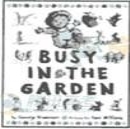题目内容
Can eating a chocolate bar every day really prevent age-related memory loss? No. But a new research shows that large amounts of flavones, substances found in cocoa, tea and some kinds of vegetables, may improve age-related memory failure.
Dr. Scott Small is a professor of neurology at Columbia University in new York City He is the lead writer of a research paper describing the effects of cocoa flavones on brain activity His study involved 37 volunteers aged between 50 and 69. Researchers gave them a high-level flavones drink made from cocoa beans or a low-level flavones drink. For a period of three months, some subjects got 900 milligrams of flavones a day. The others got 10 milligrams of flavones each day. Brain imaging and memory tests were given to each study subject before and after the study Dr. Small says that the subjects who had the high-level flavones drink showed much improvement on memorytests.
The researchers warn that more work is needed to be done because this study was performed only on a small group. Dr. Joann Manson is the lead researcher of a four .year study involving 18,000 adults. This study will use flavones capsules(胶囊) The study subjects will be divided into two groups and will take two pills per day. The capsules used will all Look the same. But one group's capsules will contain flavones, while the other group will take capsules made of an inactive substance, or placebo
Dr. Manson says it's not necessary for people to start eating more chocolate, because 3 person would have to eat a huge amount of chocolate to get the same level of flavones given to the Lest subjects. He adds many manufacturers have planned to remove the flavones from their chocolate products. Similarity, Dr. says a cocoa-based flavones extract(提取)may be developed in the future But he says that more studies are needed to see how much flavones is good for our health
1.What was done to the subjects alter Dr. Small's study?
A. They were asked to take a high-level flavones drink
B. They were given capsules containing flavones
C. They were given brain imaging and memory tests
D. They were asked to take two pills of flavones capsules per day
2.What's the similarity of the 2 experiments?
A. Both use high-level flavones capsules
B. The number of the subjects is the same
C. Drinks and placebos are used in both experiments
D. The subjects are divided into two groups in both experiments
3.Why will Dr. Manson carry out the four-year study?
A. To prove the first experiment is wrong
B. To carry out the experiment further
C. To test how much flavones can improve our memory.
D. To show eating chocolate is better to improve memory.
4.What can we learn from the last paragraph?
A. It's not necessary for us to eat chocolate
B. The more we eat flavones, the better our health will be
C. In the future we can get flavones without eating chocolate
D. It's easy for people to get the same level of flavones given to the test subjects
 天天向上一本好卷系列答案
天天向上一本好卷系列答案 小学生10分钟应用题系列答案
小学生10分钟应用题系列答案






